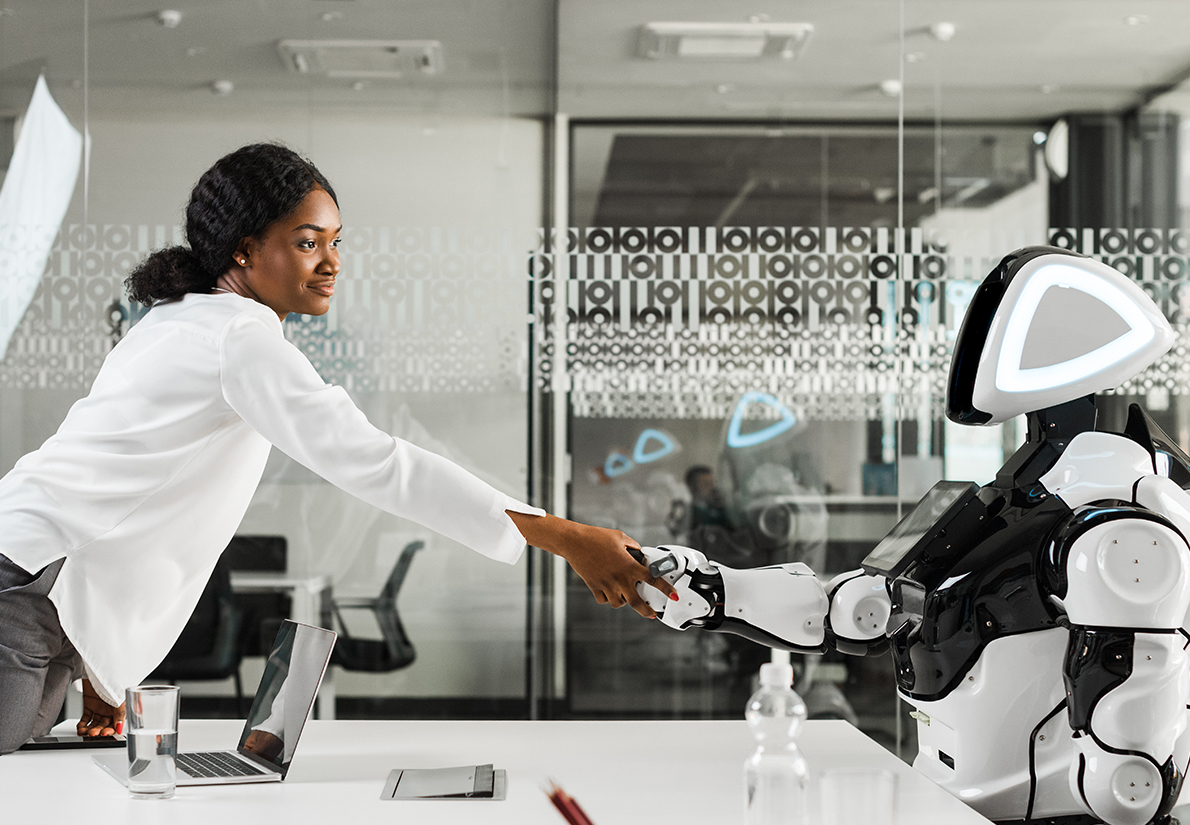It’s good… until it isn’t – Why you still need to be wary of mixing AI and HR.

It seems like Artificial intelligence is everywhere at the moment. It is developing at an incredible rate, and I am sure I don’t need to tell you how impressive it can be but, for now at least, it may be a good idea to be a little wary if using it in Human Resources.
HR and AI a perfect pair?
As with many new technologies, the rise of AI is causing quite a stir. People are predicting everything from a golden age of new job opportunities through to mass unemployment and even the end of the world. For most of us though the big questions surrounding the impact of artificial intelligence are at just an interesting topic over a Friday night post-work drink. That said, AI is also raising some more down to earth questions that employers need to consider.
Let’s just take a moment to step back and think about AI as a development in workplace technology. Advances in technology tend to succeed if they do most or all of the following:
- Increases efficiency.
- Is reliable when replicating an existing process.
- Is cost effective.
- Integrates with the existing processes.
- Employees and managers are generally positive about the new tech and see a benefit to using it.
To see that in action, let’s take a couple of examples, in this case word processing and Google glass.
Word processing software was easy to use, brought additional features and benefits and easily replaced existing tech. As a result it met all the above and replaced the typewriter in short space of time. Google glass on the other hand, promised much but was costly, didn’t really replace an existing process, the device was rather uncomfortable to wear, it was too fragile for some work environments and users were reluctant to use it. As a result, there is not much google glass around these days.
AI and HR – a cautionary welcome
So, bearing the above in mind, there are certainly areas (repetitive functions and report writing for example) where AI could well prove very useful in human resources. There is very big tick in the good idea box there, however, this positiveness does come with a very large note of caution.
The first thing we need to remember is that AI is still in its infancy. Essentially, in the case of something like ChatGPT, it collects information from online sources, evaluates their usefulness and then returns its findings in a useable form. It is rather good at doing this and, as an example of it in action, I am going to let AI take over this article. I will ask it to list 5 reasons to be cautious about using AI in human resources. Let’s see what it replies with and what we can take from it.
From this point on you will be reading machine generated copy until you read otherwise
- AI in human resources can lead to biased decisions, favoring certain groups of people over others, which can perpetuate discrimination and inequality.
- The reliance on AI in HR may result in the loss of personalized and empathetic interactions between employees and HR professionals, affecting employee morale and satisfaction.
- AI-powered algorithms may lack transparency and understanding, making it difficult for employees to challenge or question the decisions made by AI systems in HR processes.
- AI-driven automation in HR may lead to significant job displacement, as tasks traditionally performed by HR professionals could be replaced by machines, potentially causing unemployment and economic instability.
- The potential for data breaches and privacy violations increases with the implementation of AI in HR, as sensitive employee information is stored and processed by AI systems, making it vulnerable to cyberattacks and unauthorized access.
OK, you are back with a human now
The first thing you notice (apart from the predisposition to US spelling) is how worrying these 5 points are. The AI itself is warning that it can be discriminatory, inflexible if it makes a mistake, and vulnerable to cyber-attacks. All of these are fundamentally unacceptable in human resources.
Let’s zero in on that first point. When it has been used to filter applicants for roles or allowed to develop responses to, for example social media, AI has very quickly shown it can be prone to discrimination. In 2018 Amazon developed an AI driven tool designed to identify top candidates. Because the algorithm learned to identify what constituted a top candidate based on CVs submitted to Amazon over 10 years (the majority of which were from male candidates) it began to penalise applicants who used ‘female’ indicators in their applications. Gender bias quickly appeared in the hiring process because the AI identified maleness as an indication of a high performer. In another example Microsoft’s early AI experiments produced a chatbot that became increasingly racist and sexist in its responses because it ‘learned’ from its interactions with Twitter users.
The clue is in the name
To be fair though, despite the very concerning potential for bias, fears of mass redundancies, lack of accuracy, and other headline horrors, there are a lot of positives for AI. Let’s face it, it is an excellent research tool, and it can really help when it comes to creating written materials from various sources. It simply cannot, for the moment at least, be fully trusted. Something like ChatGPT can be useful, in fact, the Amazon and Microsoft examples of bias I used in this article were supplied by it. But it is worth noting that they were from 2018 and 2016 respectively. Partially this is because at the time writing this article ChatGPT has an information cut of point of September 2021, so anything later than that would not have been collected. Again, this raises a trust problem around the information it returns. In the area of human resources, you need to be up to date with current practice and legislation or you can find yourself in some very hot water.
The clue is indeed in the name because, as the AI itself identified in point 2, it is artificial by nature. Human resources are all about people. Humans are needed to understand the needs, hopes and values of a workforce. A person with empathy and understanding is required when dealing with delicate personal matters or developing a career. While the AI system may well be perfect for something like collating performance data, it is still a long way from understanding what that data means on a personal level. It cannot know the individual employees’ circumstances and even if it did, there is a very big question around whether it will be able to respond appropriately.
In short, AI is useful, but it isn’t human, and your employees are. Your HR support needs to be able to treat your workforce as people, not data, and AI is not ready for that yet.














